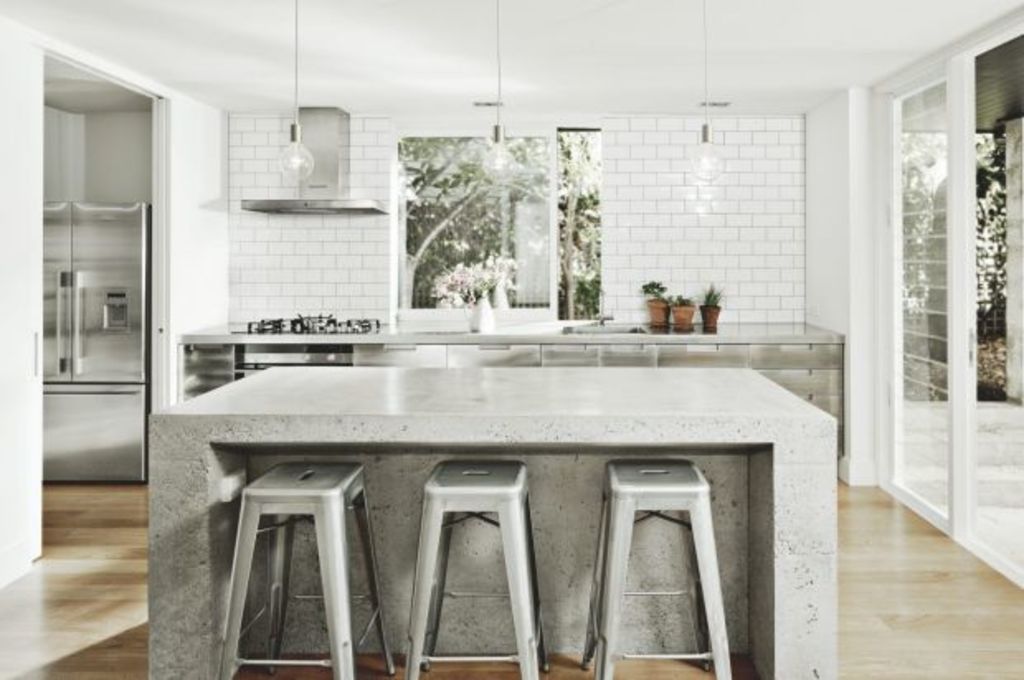The magic ingredient within a good kitchen design

If there’s one room in your house that needs to be functional, surely it’s the kitchen. So what’s the secret to ensuring that your kitchen works in the most functional way?
Architects and designers agree that if there were one magic ingredient to kitchen design, it would be the “kitchen work triangle”.
For the uninitiated, the work triangle is a design principle in which the three most utilised components of a kitchen—usually the fridge, stovetop and sink—are within easy reach of each other, traditionally in the shape of a triangle. The idea is that you only need to take minimal steps to move between each point.
“The maximum steps are two to three,” says interior designer Fiona Lynch, who has designed hundreds of kitchens, all with some form of work triangle. “Any more than that and you’re going to get a workout while cooking – but it’s probably not good if you’re trying not to burn something!”
Interior designer Pascale Gomes-McNabb agrees. “Kitchens that are planned with the sink, stove and fridge in a triangular formation are generally more efficient and ergonomic to use”.
“You definitely work faster in a well-planned kitchen.”
It’s a concept that was first developed in the 1940s by design researchers from the University of Illinois, who gave very specific guidelines on how the work triangle was to function.
There should be between four and seven feet (1.22 and 2.13 metres) between the refrigerator and sink, they said, four to six feet between the sink and stovetop, and four to nine feet between the stove and fridge. There was also to be as little foot traffic crossing the triangle as possible.
- Related: How to design your dream kitchen
- Related: What’s trending in kitchen design right now
- Related: Why the kitchen is the most important room
Of course, kitchens today are not the same as the standard kitchen of the 1940s. We are seeing more open-plan designs, for example, rather than a separate kitchen, which actually makes the work triangle even more important.
“People are wanting very large kitchens,” says Lynch. “Often the most functional kitchens are quite small. Some houses seem to be getting bigger, but [you need to make sure] that the triangle still works.”
On the other hand, there are more people living in small inner-city apartments. Gomes-McNabb says that in these spaces, the components might be arranged in a linear style. However, the basic idea of these three points remains.
Architect Brad Swartz suggests making sure the spice rack is within easy reach of the stovetop, and refers to a decent amount of bench space as the “fourth element” of good kitchen design.
“I’ll typically push the cooktop to one side and the sink to the other side so you can then have a good space between for preparing food,” he says. “Also, a slightly deeper-than-standard bench top is really nice. A standard bench top is 600mm deep, but if you do one that is 650 or 700, you can do two sets of plates, front and back.”
Nick James of Architecture Architecture adds that the bench height should be tailored to homeowners for maximum cooking efficiency and that using island benches in work triangles isn’t for everyone.
“People either love it or hate it because the dishes end up piling up on the island bench,” he says.
Architect Chloe Naughton points out that there should be ample space on which to place hot or heavy dishes and that kitchen designers should be careful when it comes to galley-style kitchens.
“The distance between either side of the kitchen is key to the triangle working successfully,” she says. “If the space between is too large, it seems to interrupt the flow of the kitchen.”
The good news is that once you’ve got the flow of the kitchen down pat, you can set about making the place look beautiful.
“If you get the kitchen design right, you can go to town on the aesthetics,” says James.
We recommend
We thought you might like
States
Capital Cities
Capital Cities - Rentals
Popular Areas
Allhomes
More







